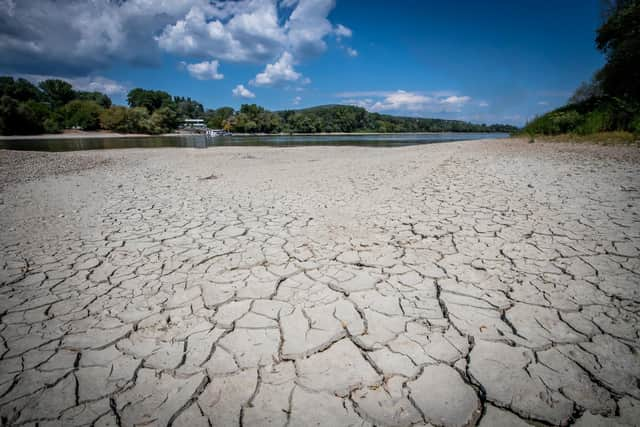Climate change: Why saving water even when it's not scarce is a good idea – Dr Richard Dixon
As well as protecting river flows, reservoir levels and drinking water supplies, there are good climate change reasons for saving water.
Last week the Scottish Borders and northern Fife were classified as having "significant scarcity”, the highest level of warning. The rest of the east coast up to Moray was in “moderate scarcity” with the rest of the east of Scotland and Ayrshire on “alert”. Restrictions were introduced last week on farmers who usually take water from the Eden in Fife with further controls on the Tweed in the Borders to follow.
Advertisement
Hide AdAdvertisement
Hide AdAt the weekend, I saw a Fife farm using a giant hose to spray water tens of metres across a crop.
This may not have been in an area covered by the new restrictions but it was the worst possible way to use water on a farm. On a hot day, a good proportion of the water evaporates into the air and never even reaches the crop. Then another good fraction evaporates before it can sink into the ground.
The combination of dry weather, parched ground and then rain is a dangerous one. The downpours earlier in the week brought more than a dozen flood alerts because the ground is so dry that water does not soak in but instead rushes onwards, endangering communities downstream.
In Scotland this year, five of the seven months so far have had below average rainfall, with March having less than half the normal amount of rain. Rivers and reservoirs are running low and groundwater levels are at their lowest level since monitoring began in 2009. It will take many days of heavy rain to reduce the threat of scarcity.


In France, the Loire, the country’s longest river, is down to a trickle in some places, leaving 100 towns to get water by truck and 12 nuclear power stations without cooling water.
The Po, the Rhine and the Danube are all in trouble and scientists predict this may be the worst drought in Europe in 500 years, with drought conditions likely to persist for the next three months.
Meanwhile, the on-going drought in sub-Saharan and eastern Africa has brought 11 million people in five countries to the brink of starvation. Lack of water for agriculture, livestock and people is driving conflict and migration from rural areas into cities.
We are being exhorted to stop watering the lawn, cleaning the car or even showering so often. But it is always worth being thrifty with water, not just to protect supplies but because it takes lots of energy to produce drinking water and clean up waste-water. Scottish Water is one of Scotland’s largest electricity users, using enough to power 140,000 homes.
Advertisement
Hide AdAdvertisement
Hide AdEspecially with current increases in electricity prices, they will be glad they have invested in renewables in the form of wind and hydro turbines, solar schemes and biomass boilers, as well as buying local renewable electricity when they can. But using even less energy is always better.
The current water crisis might get you into the water-saving habit, but it’s a good habit to keep in normal times too.
Dr Richard Dixon is an environmental campaigner and consultant
Comments
Want to join the conversation? Please or to comment on this article.
